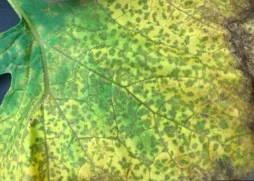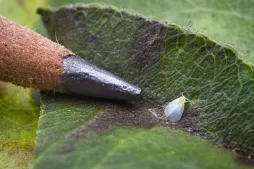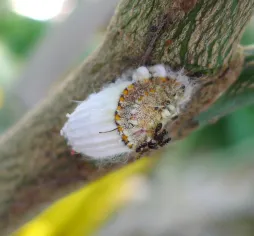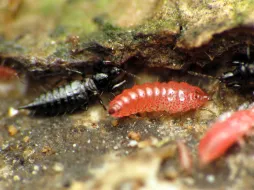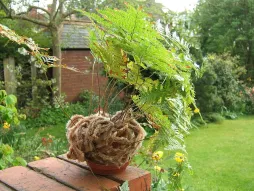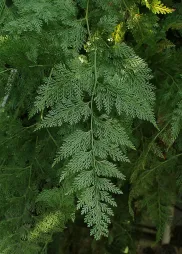Davallia trichomanoides, squirrel's foot fern
Every family has a black sheep, someone who does nothing like the others. In the Davalliaceae, this original is Davallia trichomanoides. Whereas rabbit's foot ferns have beige or golden rhizomes, this variety, native to southern China and India, has dark or silver rhizomes. This characteristic has earned it the nickname squirrel's foot fern.
How to recognize Davallia trichomanoides, the squirrel's foot fern?
Davallia trichomanoides is an epiphytic fern with a flared, drooping habit. It grows to between 15 and 45 centimetres tall.
Its fine rhizomes rarely exceed 5 millimeters. Like those of Davallia tyermannii, they are covered with scales and a silky down. But their color is darker. Silver or brown, they give the aerial roots a chestnut sheen.
Fronds grow from a gray-green, hairless stipe. Triangular in shape, they measure between 15 and 25 centimeters. The dark-green foliage is finely chiselled. Each frond is divided into several toothed pinnae.
Spores are clustered on the underside of fertile fronds in ochre or dark yellow sporangia.
The leaves and rhizomes of Davallia trichomanoides are non-toxic. You can grow a squirrel's foot fern even if you live with pets and young children.
Our maintenance tips
If you want to start a fern collection, start with davallia trichomanoides. More resistant than other varieties, they can withstand a few forgotten waterings and tolerate lower hygrometry.
Watering
Always keep the substrate moist, but not soggy. Water the soil with water at room temperature. Use non-calcareous water, such as rainwater or demineralized water.
Excess water rots roots and rhizomes. Remove any stagnant water from the saucer and avoid over-wetting the aerial roots. If you have trouble handling your watering can, water by capillary action. This way, you're sure not to drown the rhizomes.
Spray
Fogging foliage and rhizomes with room-temperature water improves hygrometry.
Spraying also helps combat pest attacks.
Use non-calcareous water to avoid leaving white marks on the foliage.
Repotting
Your Squirrel's foot fern has shallow underground roots and a spreading habit. Choose a pot that is wider than it is tall. Prefer a perforated container, so that excess water can drain away.
Fill your pot with a substrate for epiphytic and acid-loving plants. For example, mix 50% peat moss, 25% sand and 25% ordinary potting soil. Plant your fern in the center without burying the rhizomes.
Spray the soil and rhizomes with non-calcareous water at room temperature after repotting.
Fertilization
You can stimulate the development of your plant during its growth phase, in spring and summer, with fertilizer.
Fertilize your Squirrel's foot fern with a green plant fertilizer diluted with water. Divide the dose prescribed by the manufacturer by four.
Prune
To encourage the growth of your Squirrel's foot fern, prune regularly.
Remove dry or brown fronds to prevent them from rotting and bringing disease. Cut them off at the base with clean, sharp pruning shears or scissors.
Cutting
Cutting is carried out during the strong growth phase, generally in spring and early summer.
Take davallia trichomanoides out of its pot. Using a clean, sharp knife, remove a rhizome with roots and fronds.
Fill a pierced pot with a mixture of peat moss, potting soil and perlite. Place the rhizome on the substrate, without burying it. You can hold it in place with an iron clip or hairpin.
Your cutting needs plenty of moisture to grow. Grow it in a greenhouse. You can place the pot in a mini greenhouse, in a transparent crate or in a translucent bag with an airtight seal.
Place your cutting in a bright room, with a temperature of at least 20°. Mist the substrate regularly to keep it moist, and aerate for a few minutes a day.
Diseases / Threats
Information
| Family | Davalliaceae - Davalliaceae |
| Type | Rabbit's foot - Davallia |
| Species | Squirrel Fern - Davallia trichomanoides |
| Lifecycle | Perennial |
| Foliage | Evergreen |
| Exposures | |
| Substrat | |
| Planting method |
In pots |
| Categories | |
| Tags |
Beginner Fritillary |
| Origin |
South Asia |
| Hardiness (USDA) | 11b |
| Leaf color |
|
Discover plants from the same family












